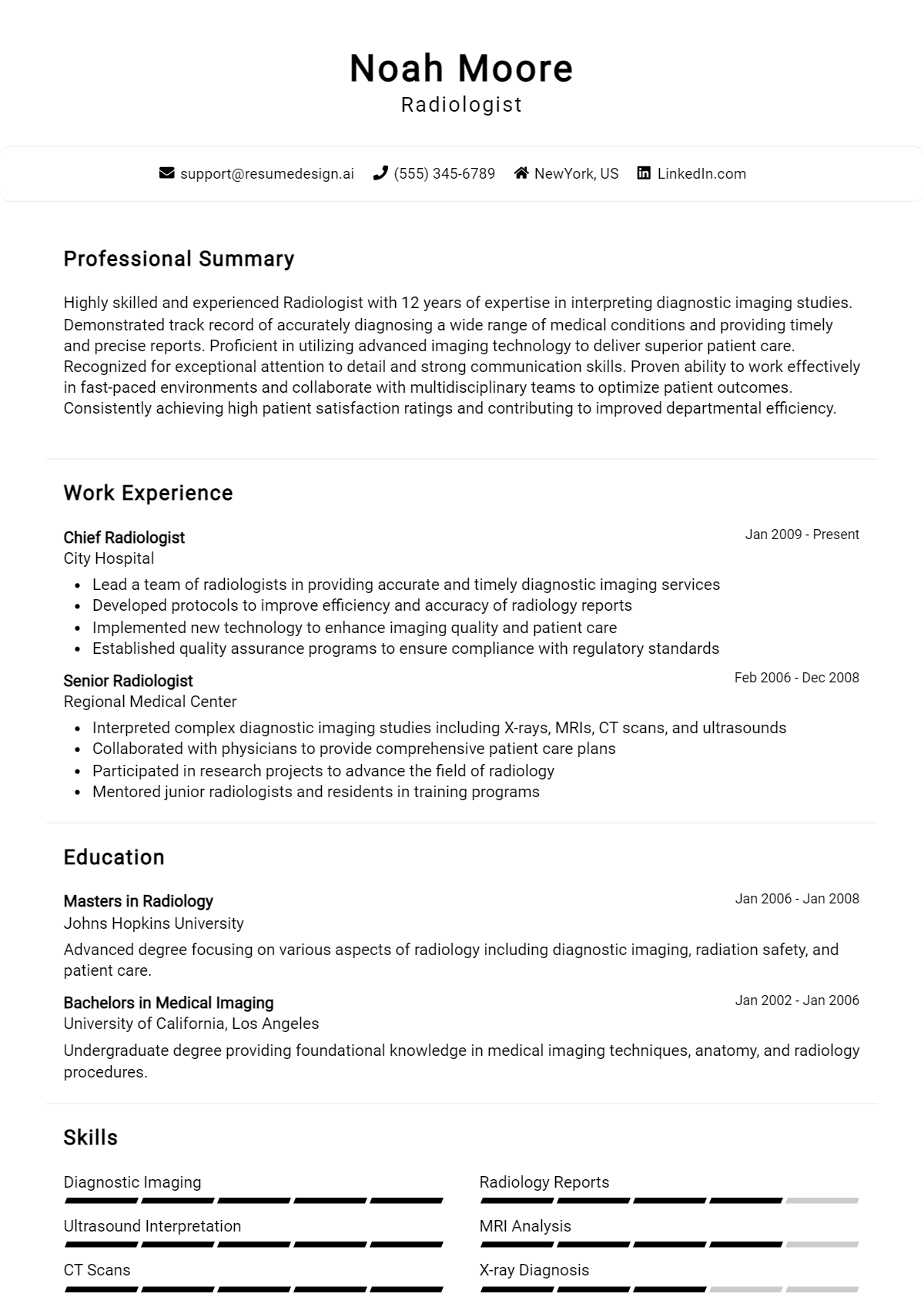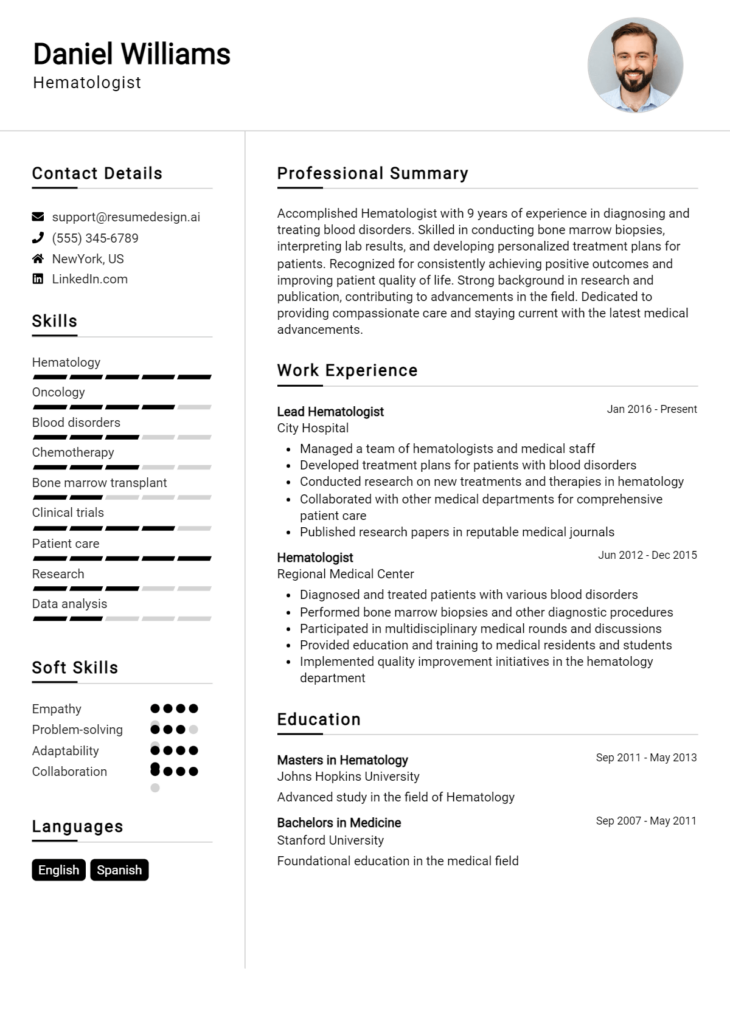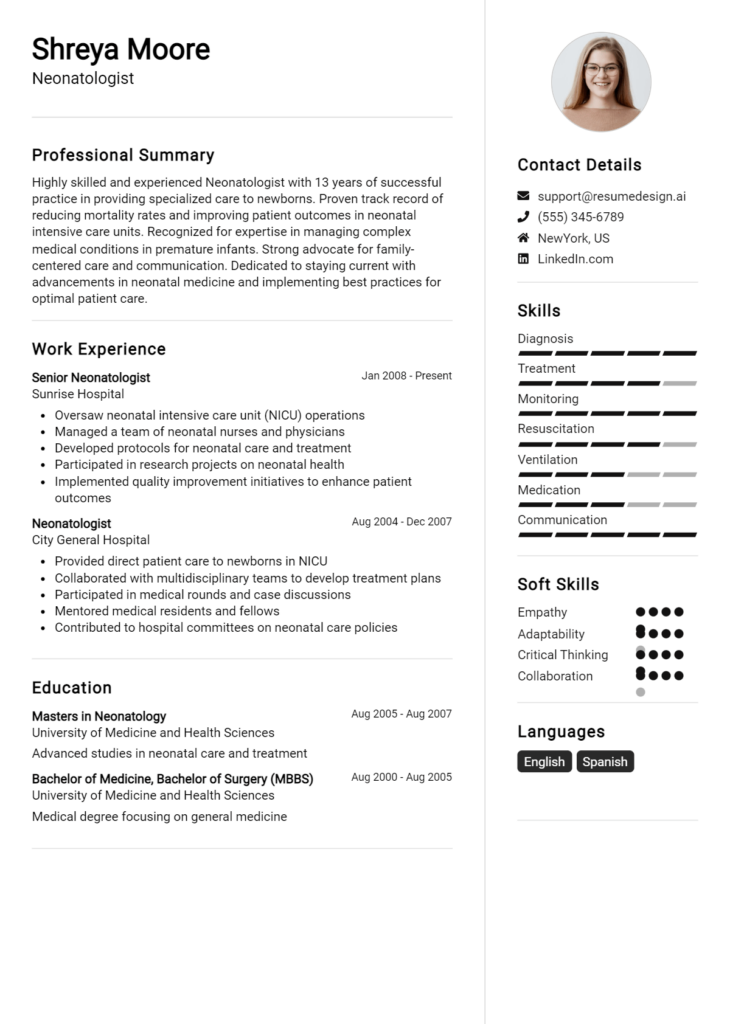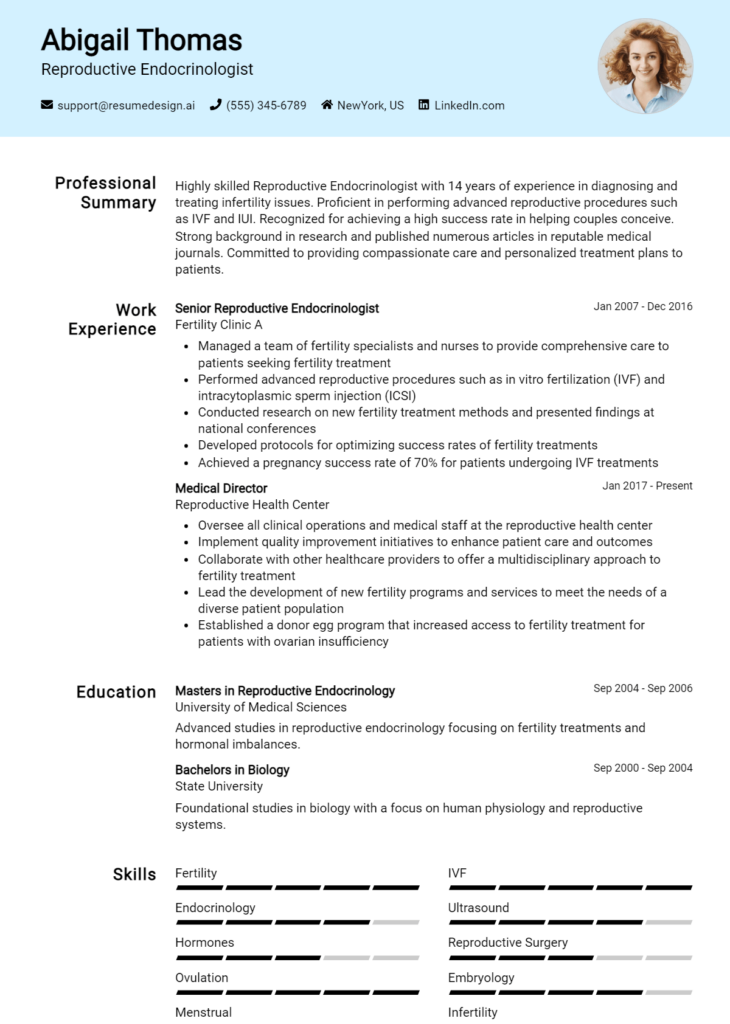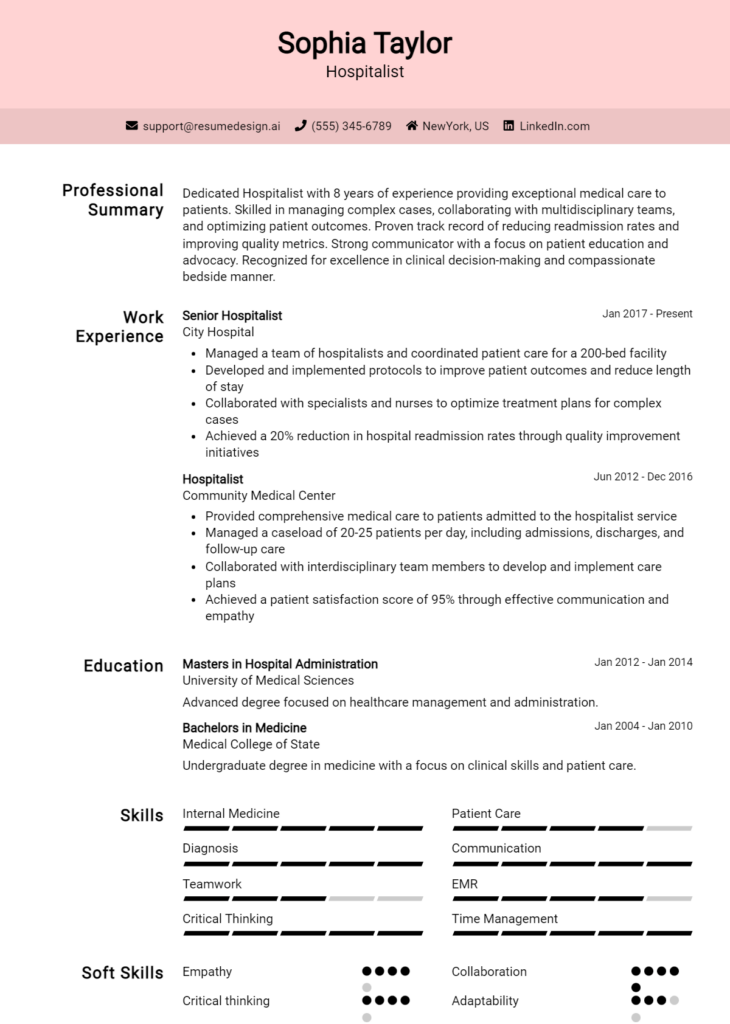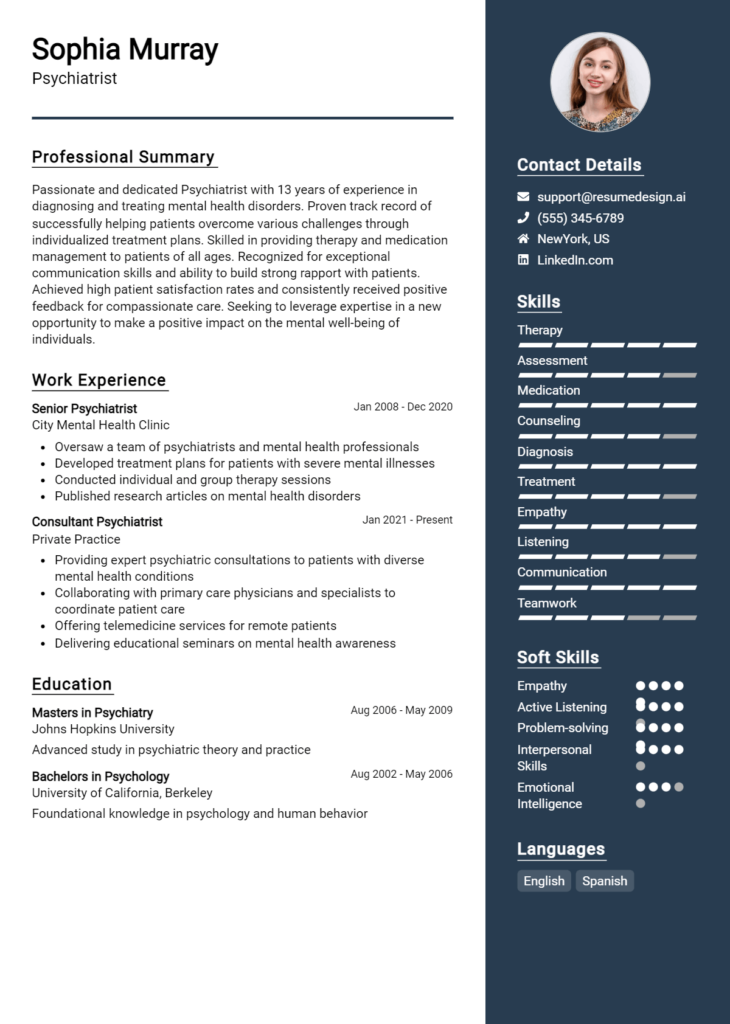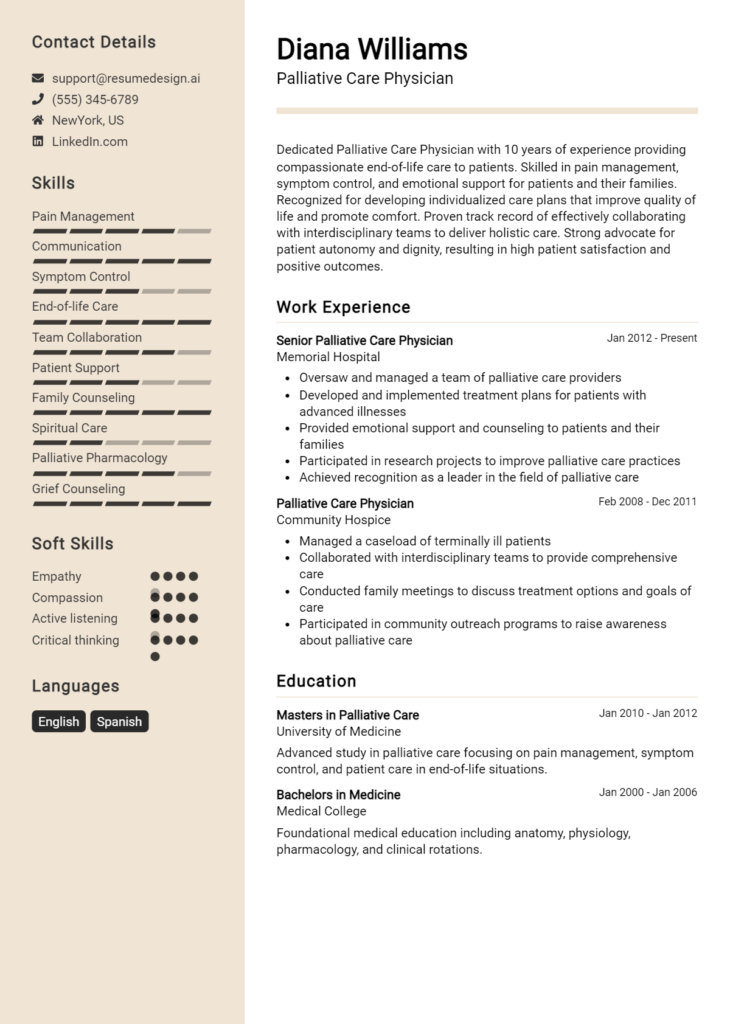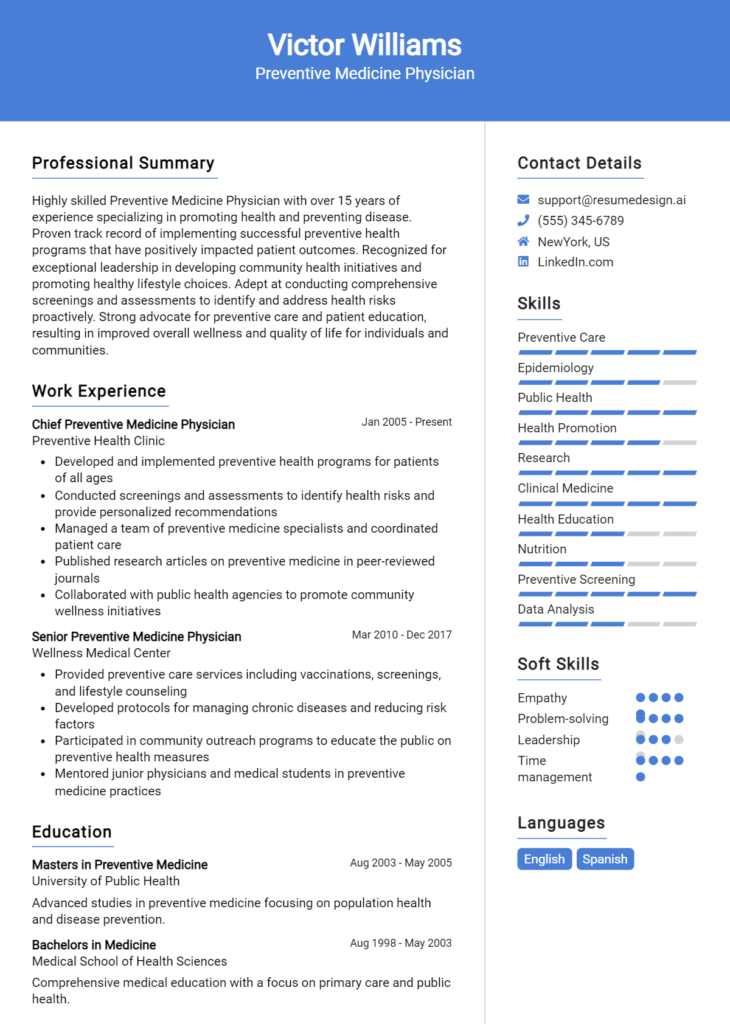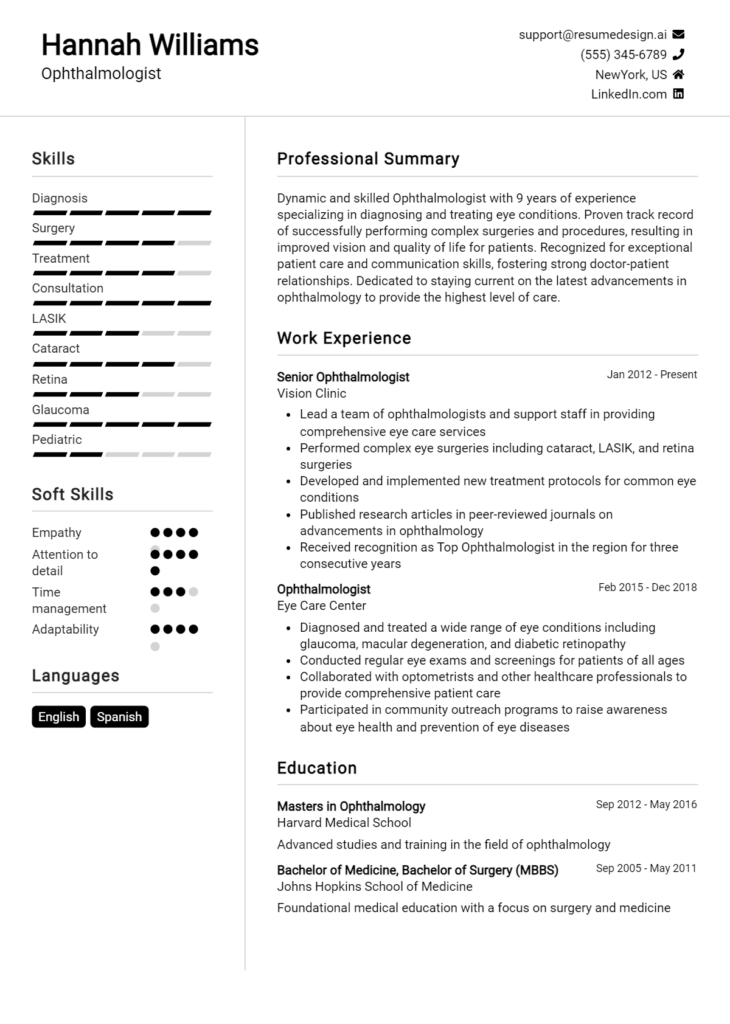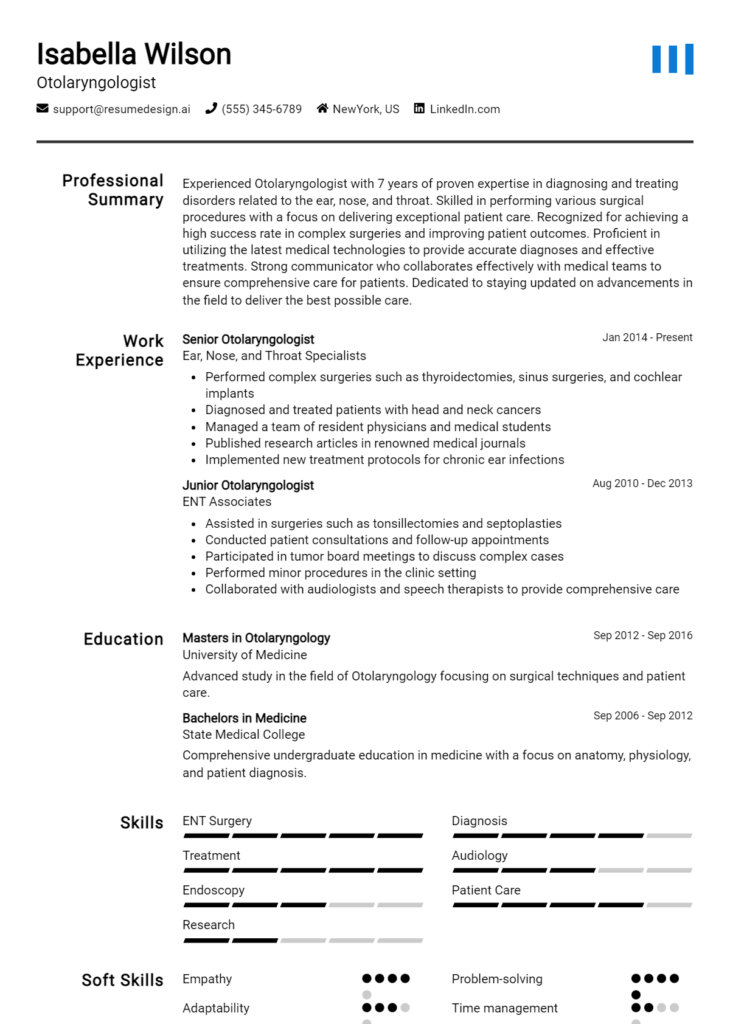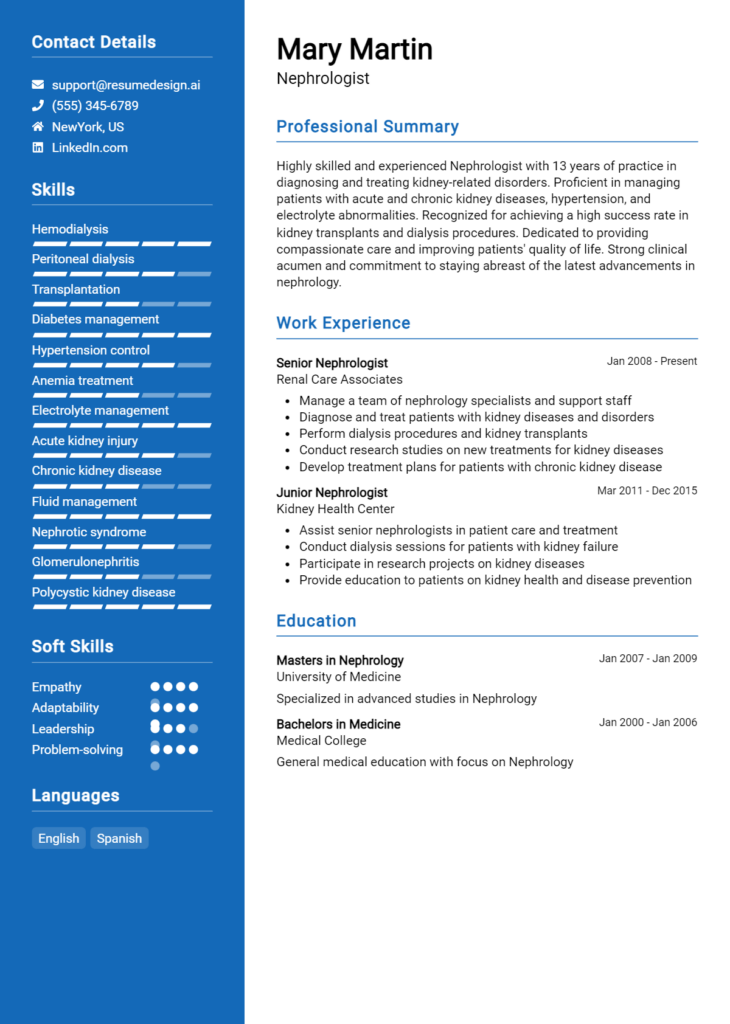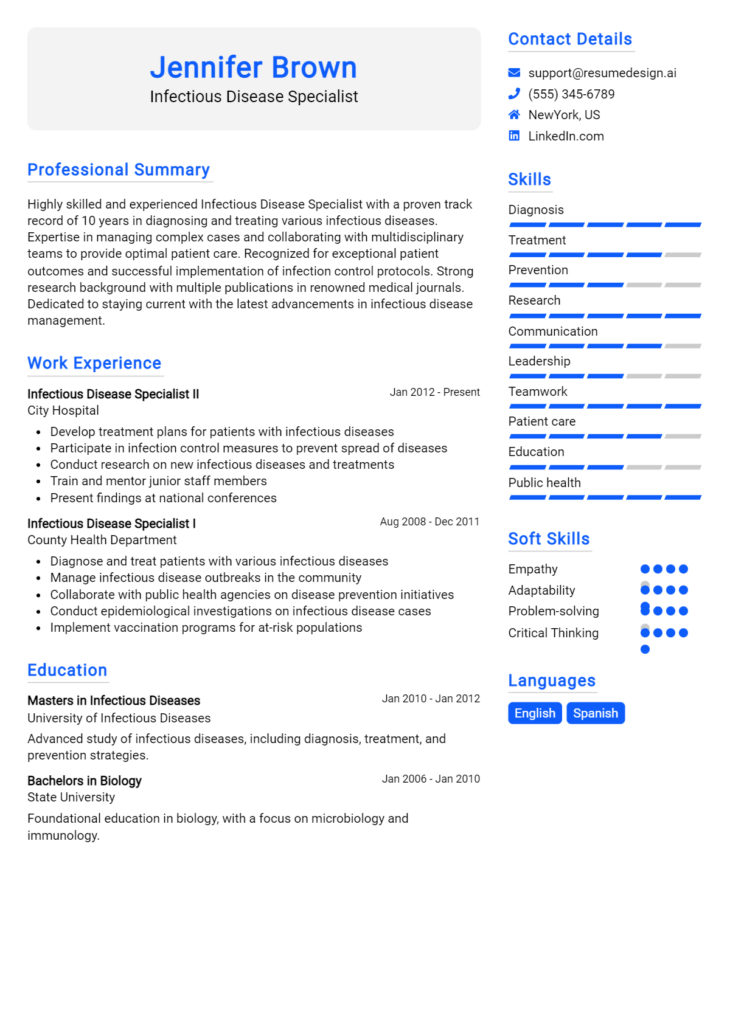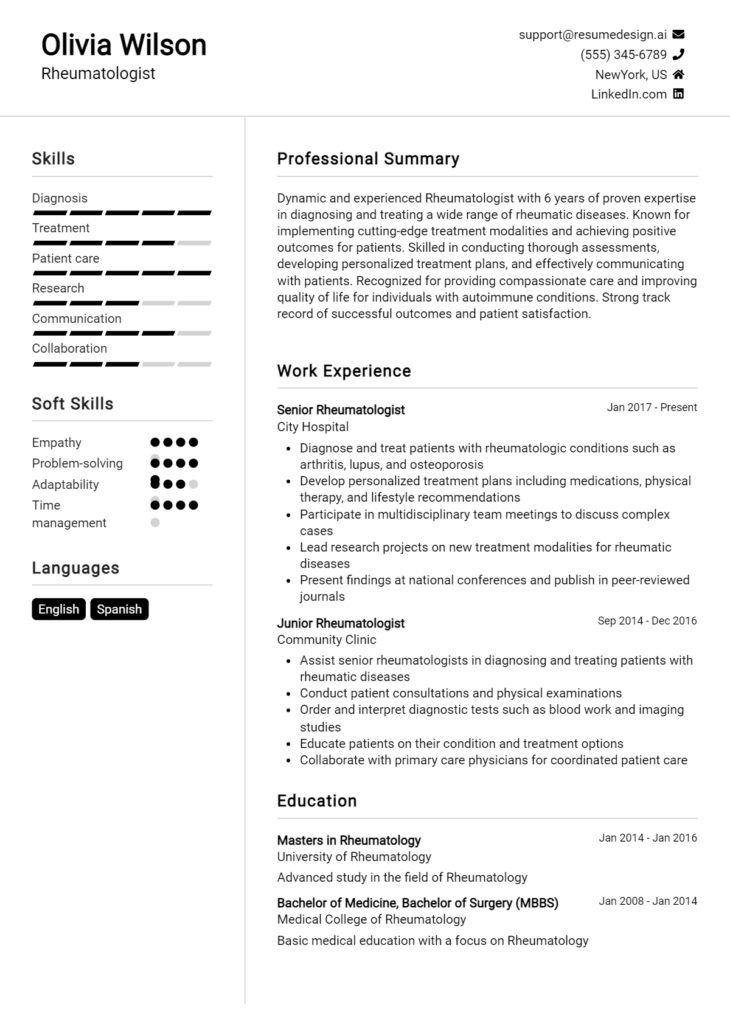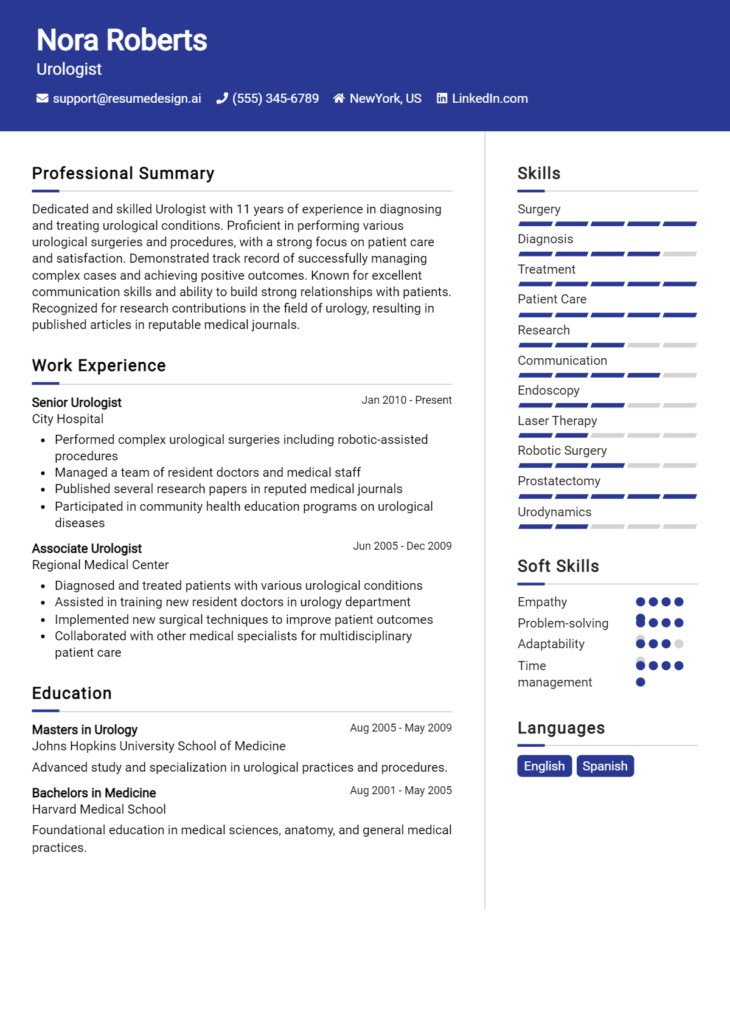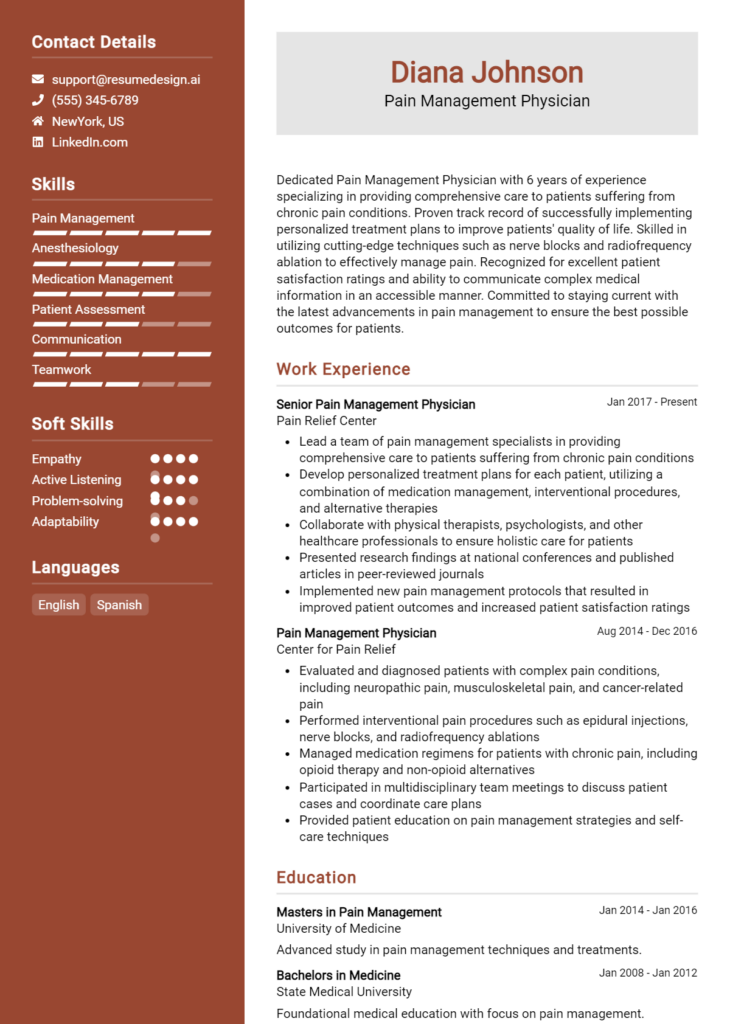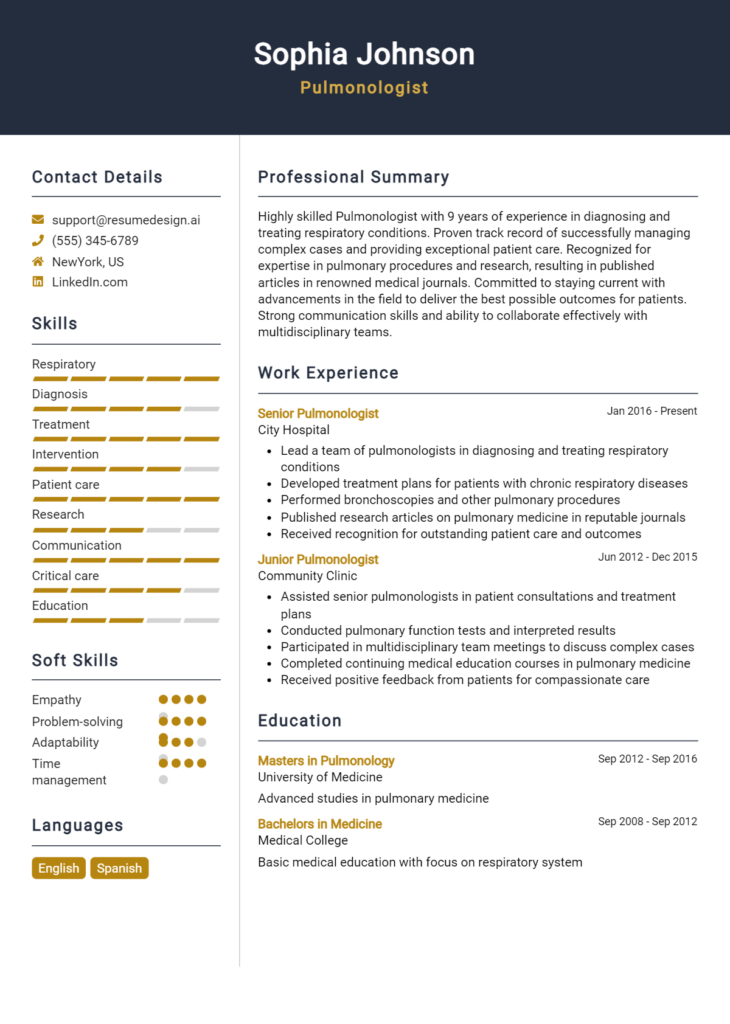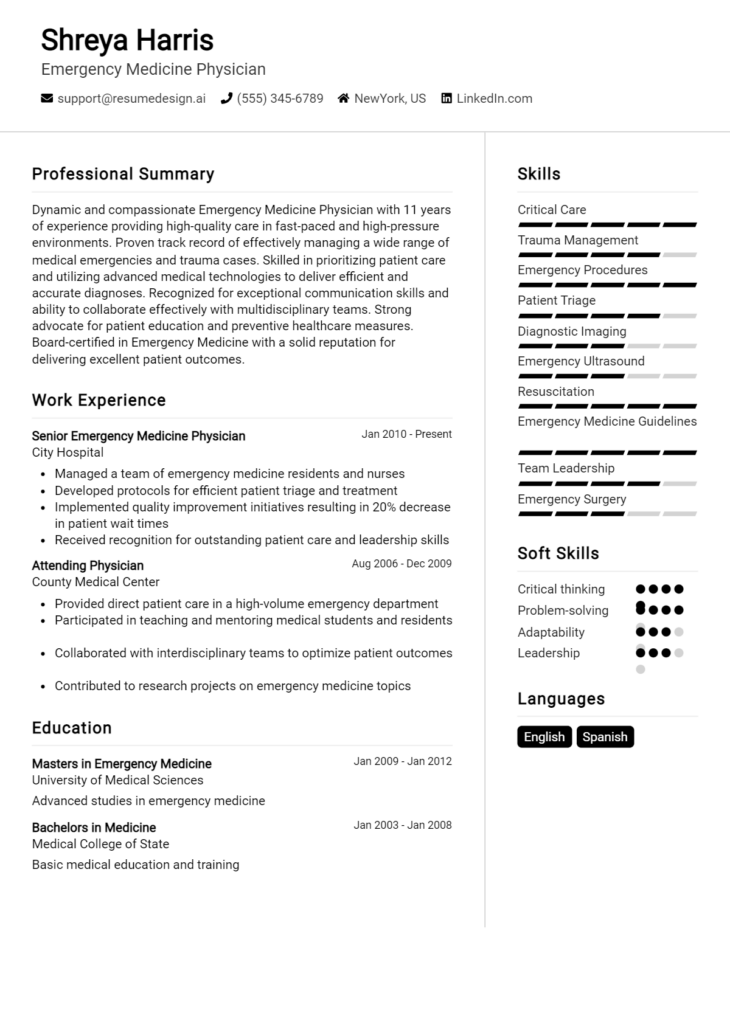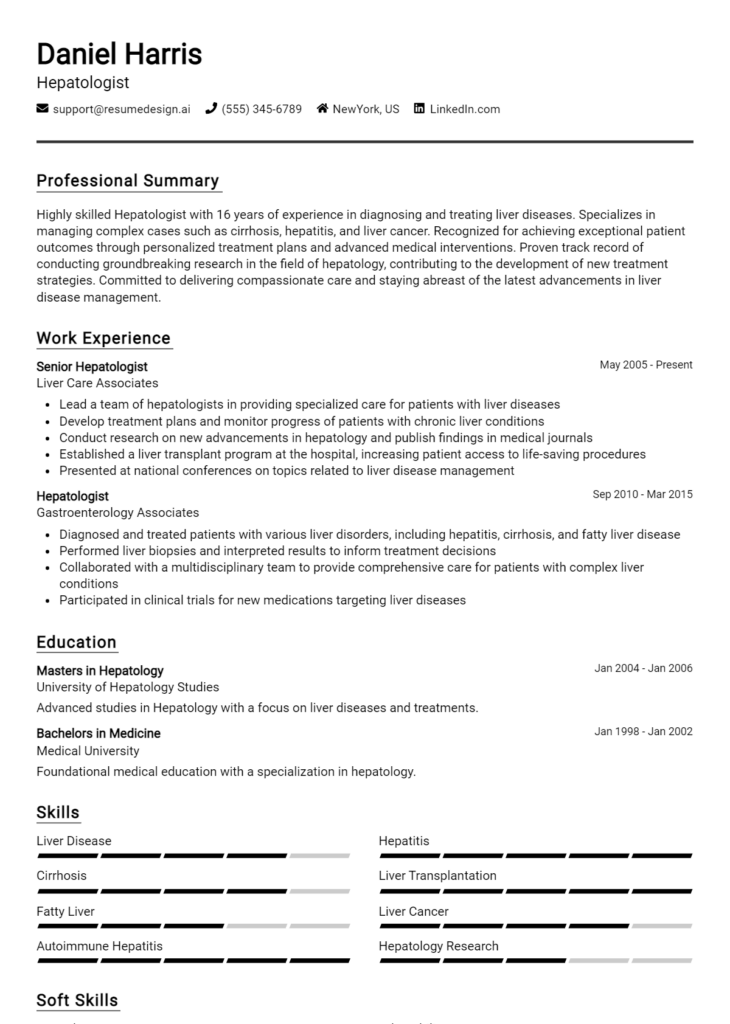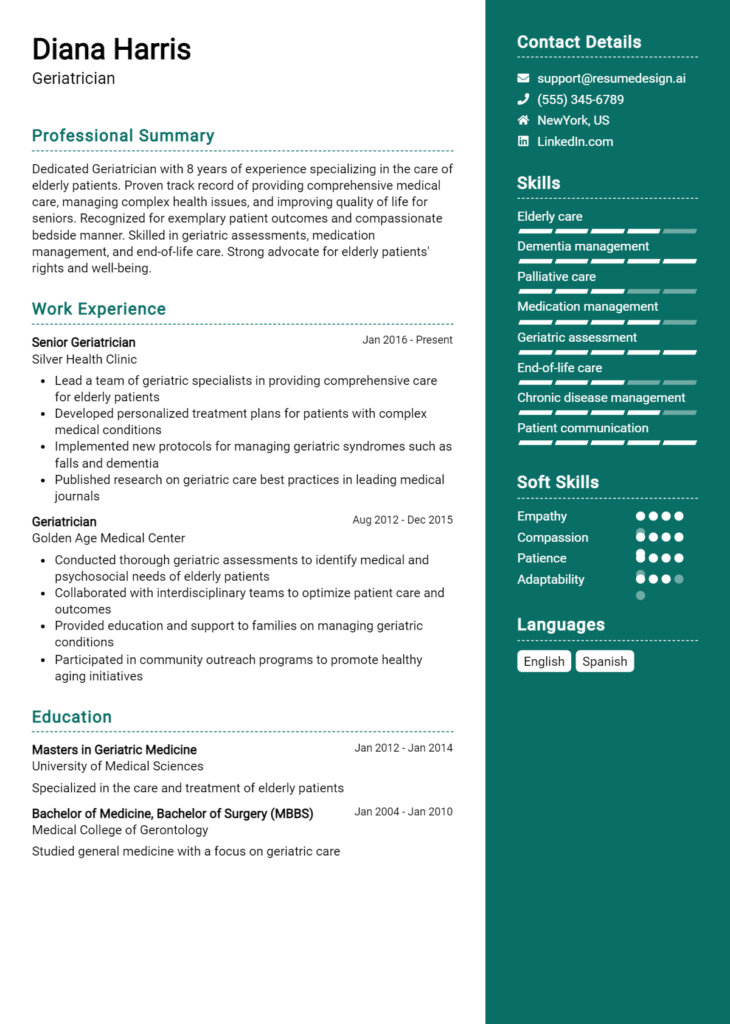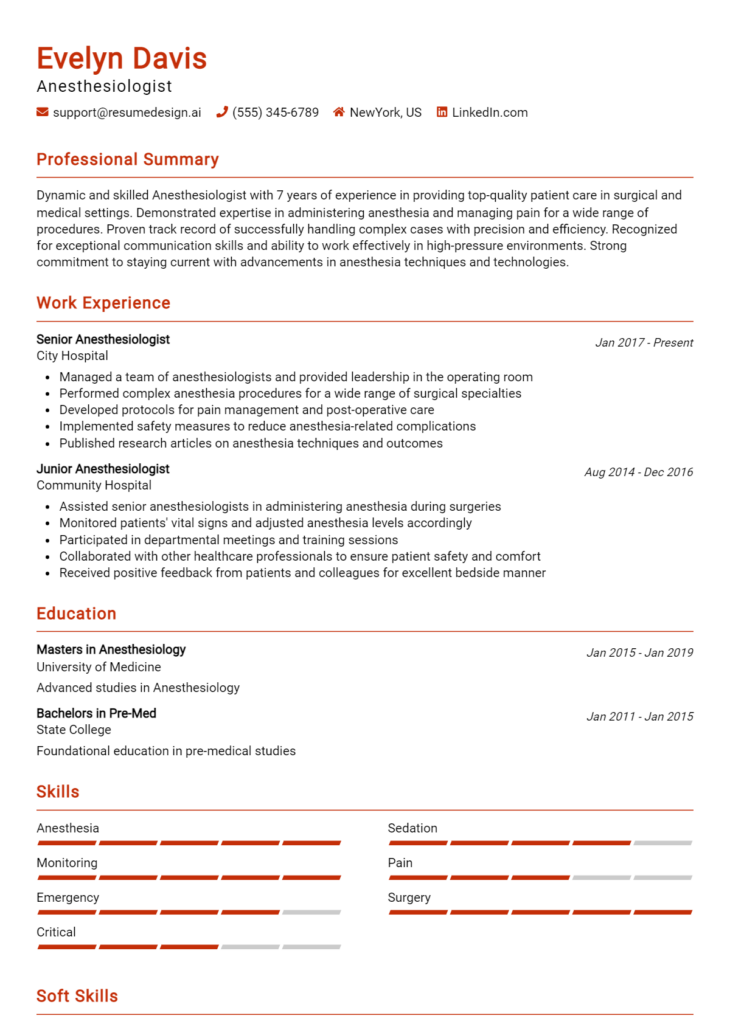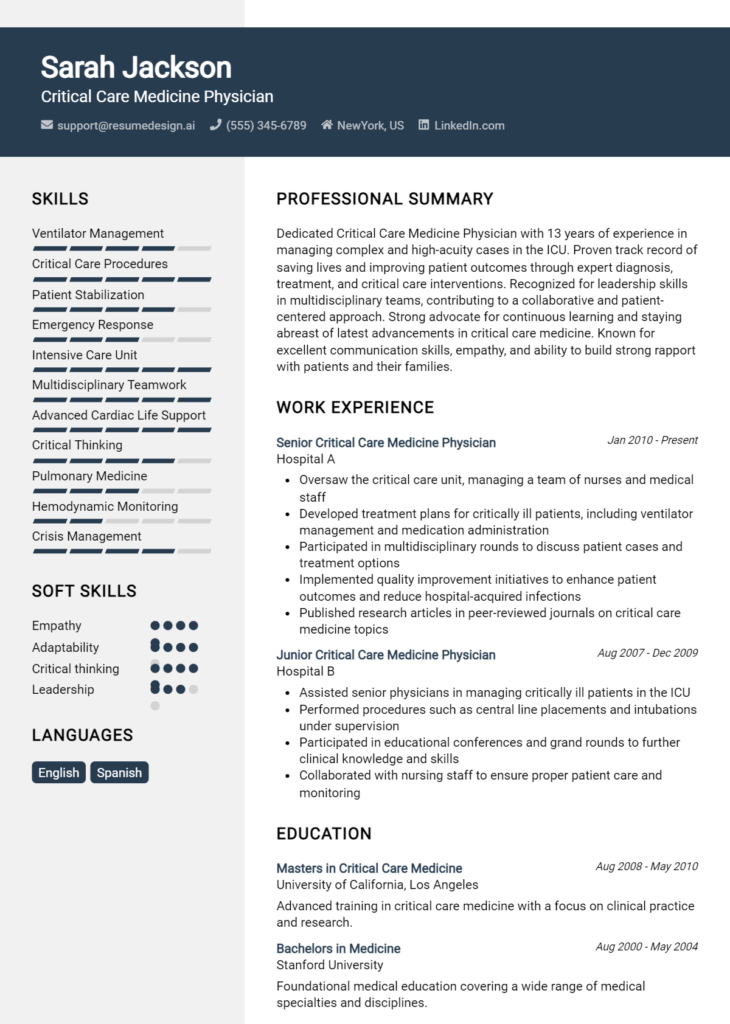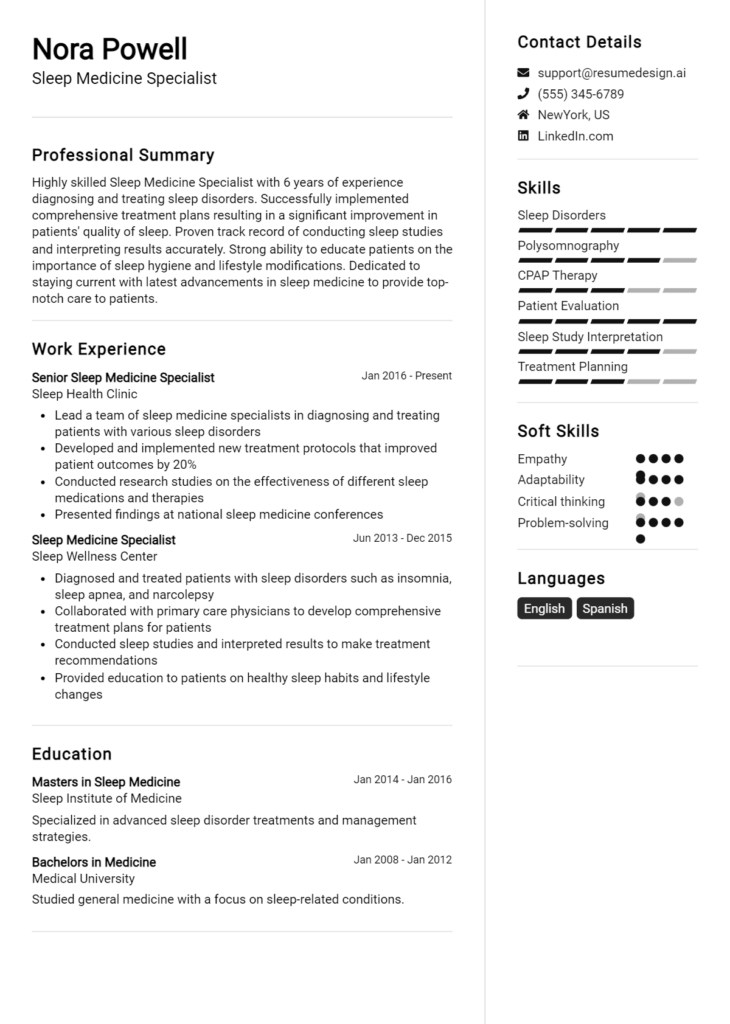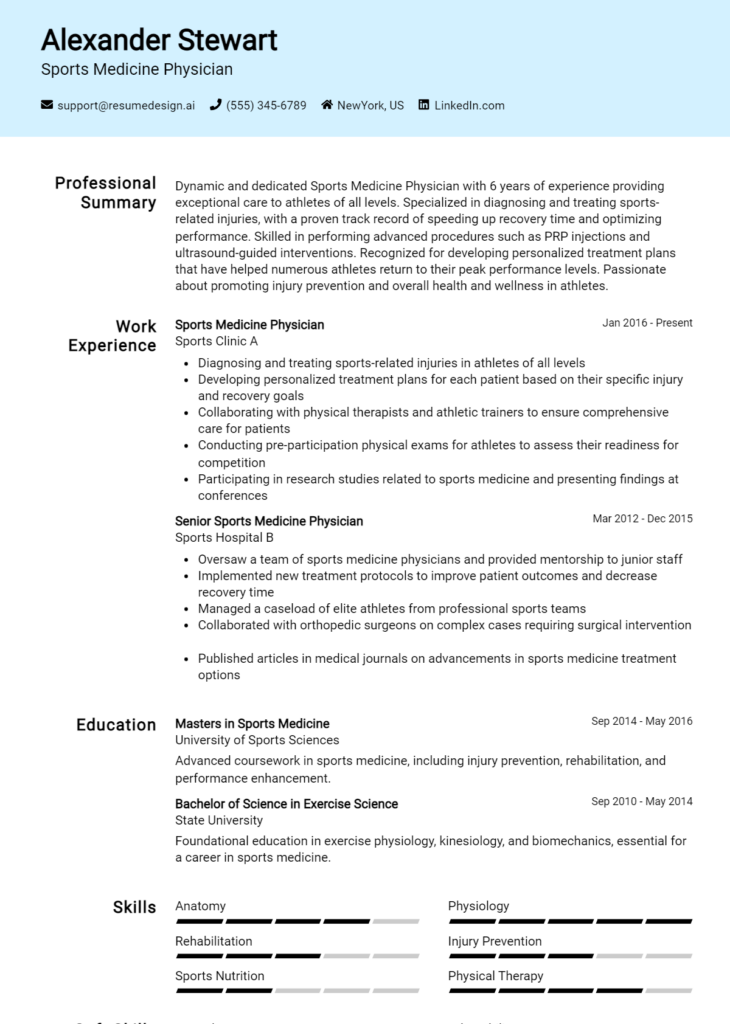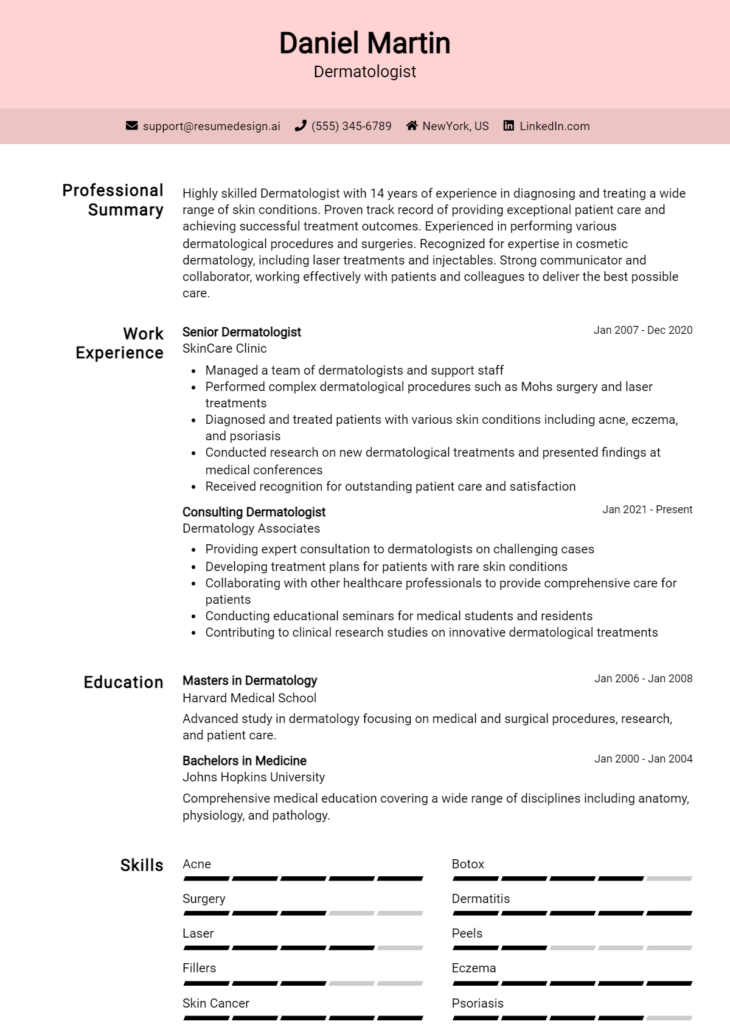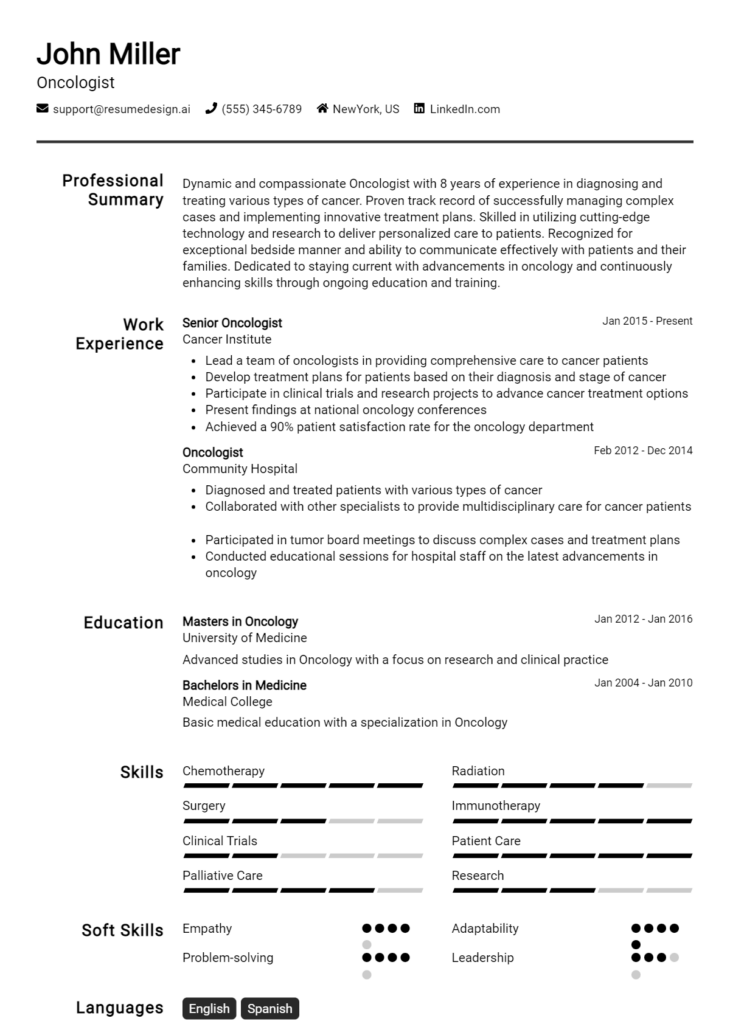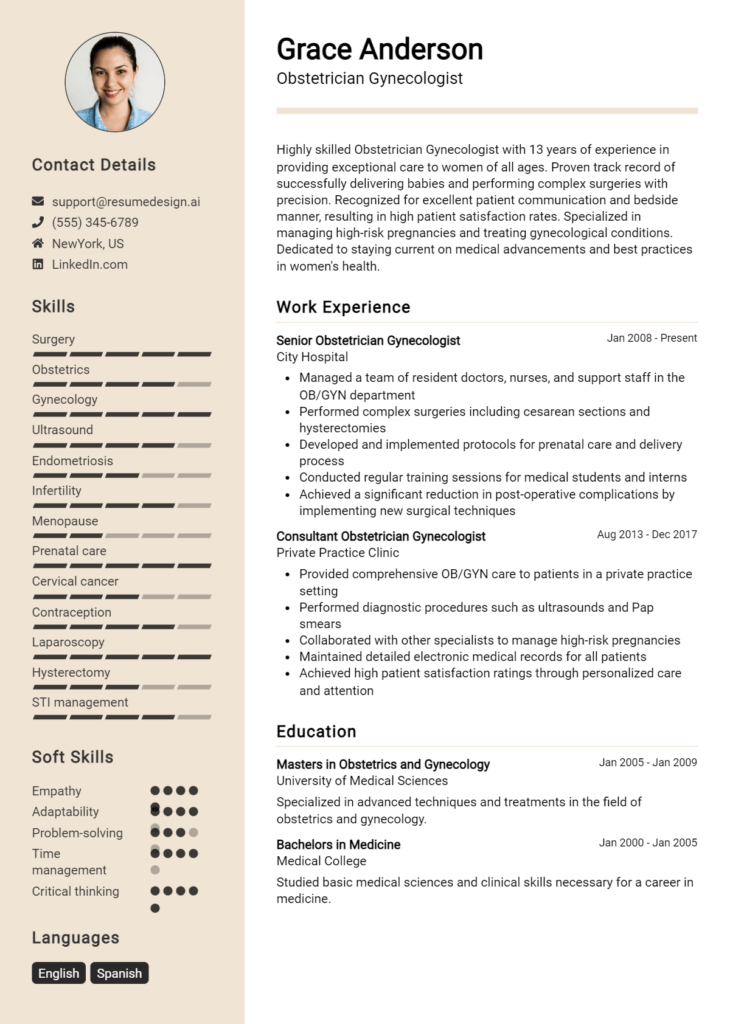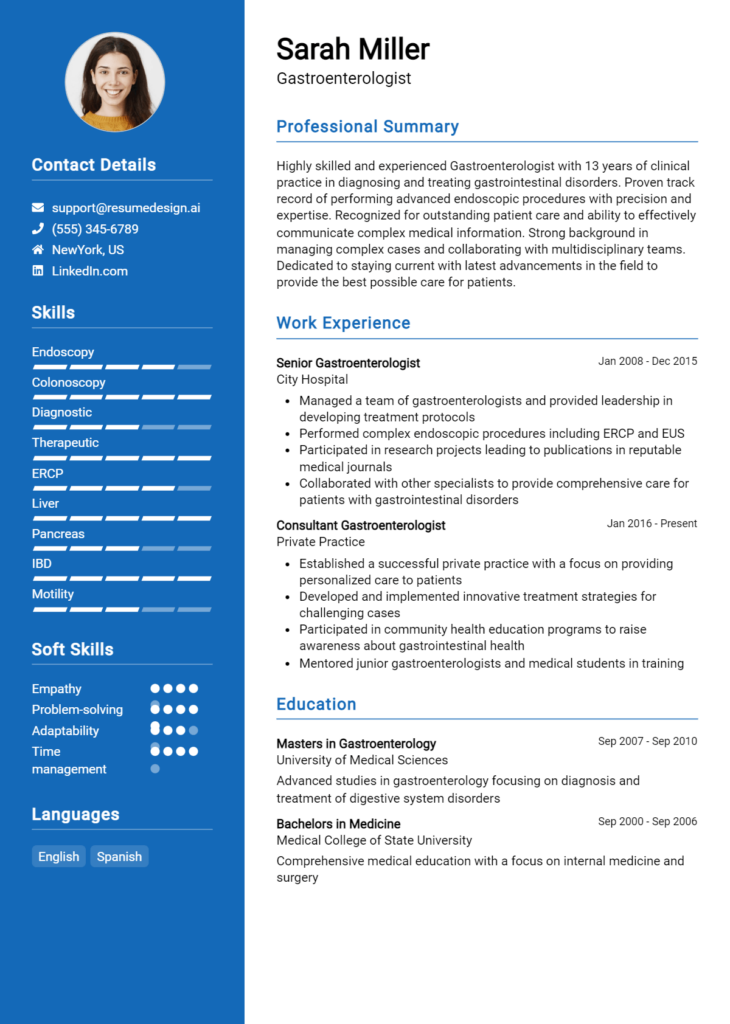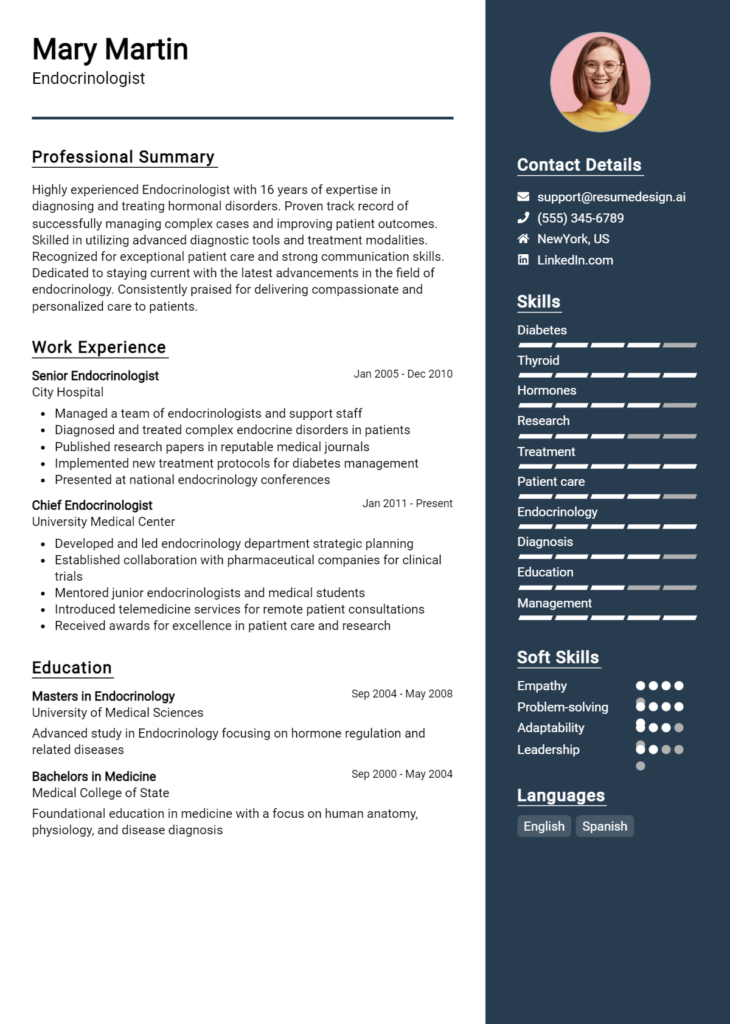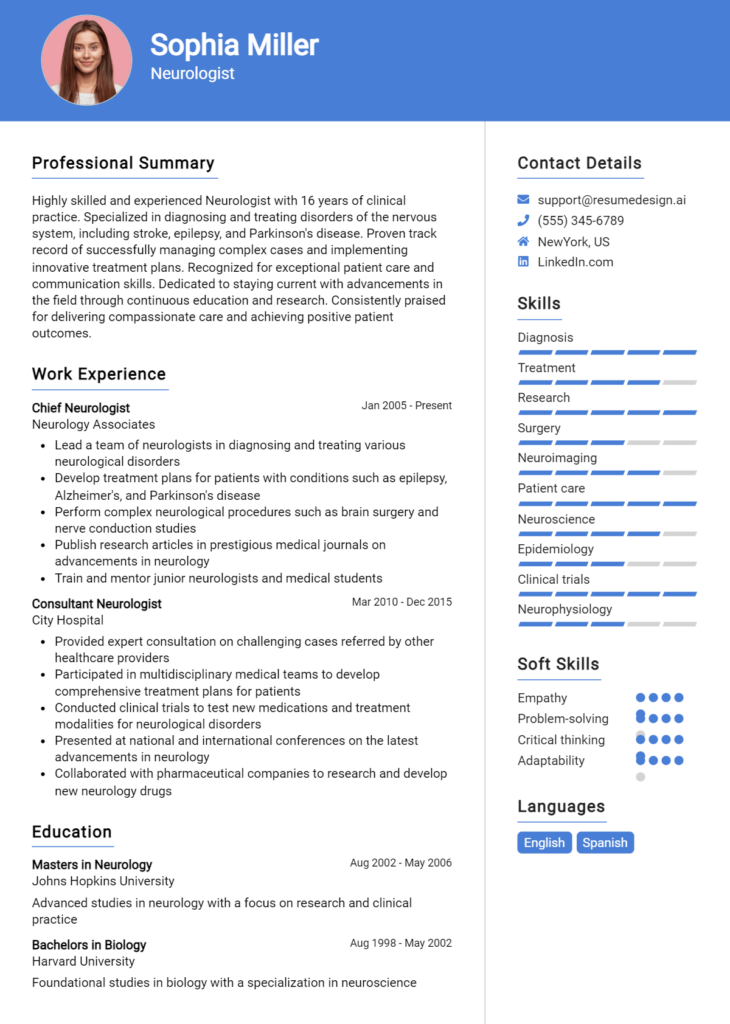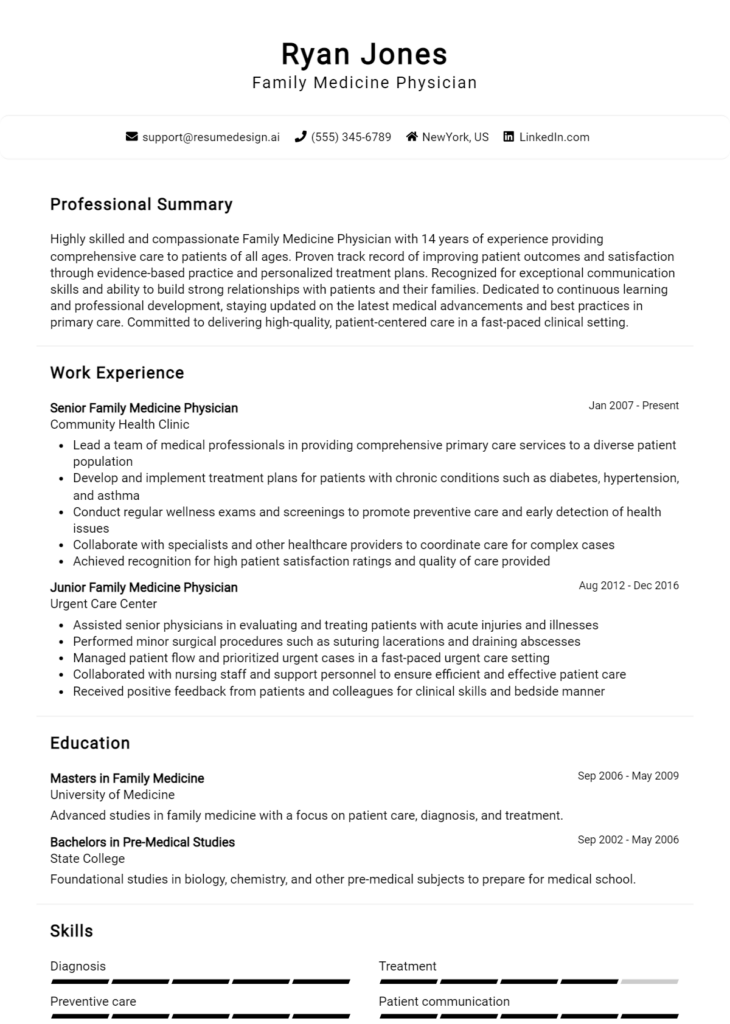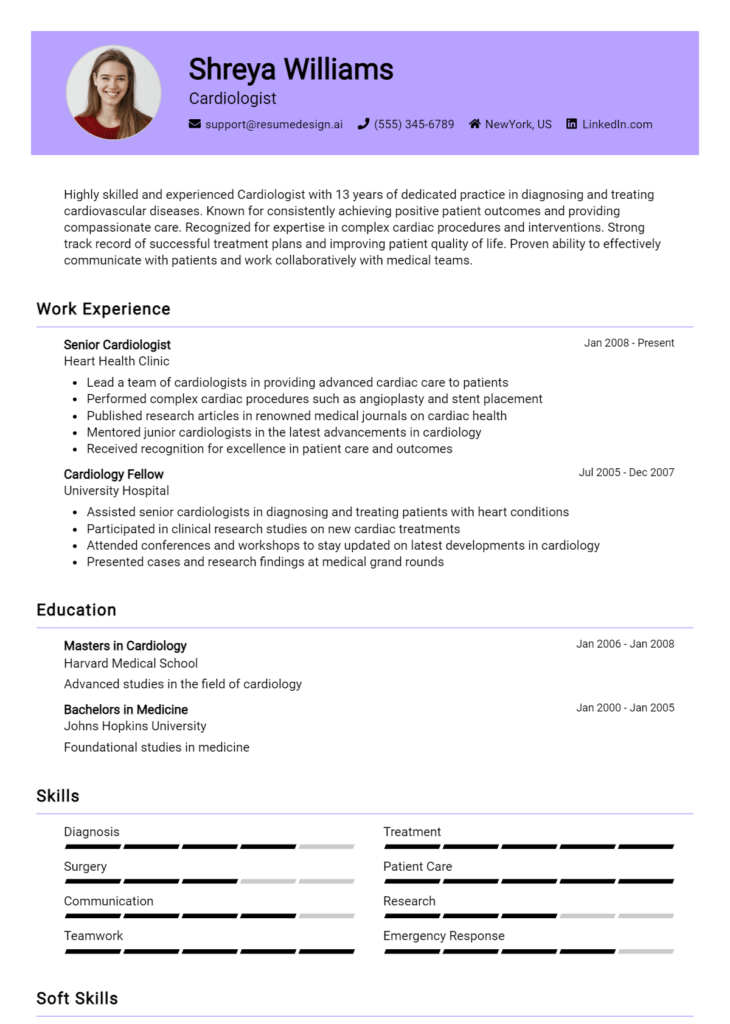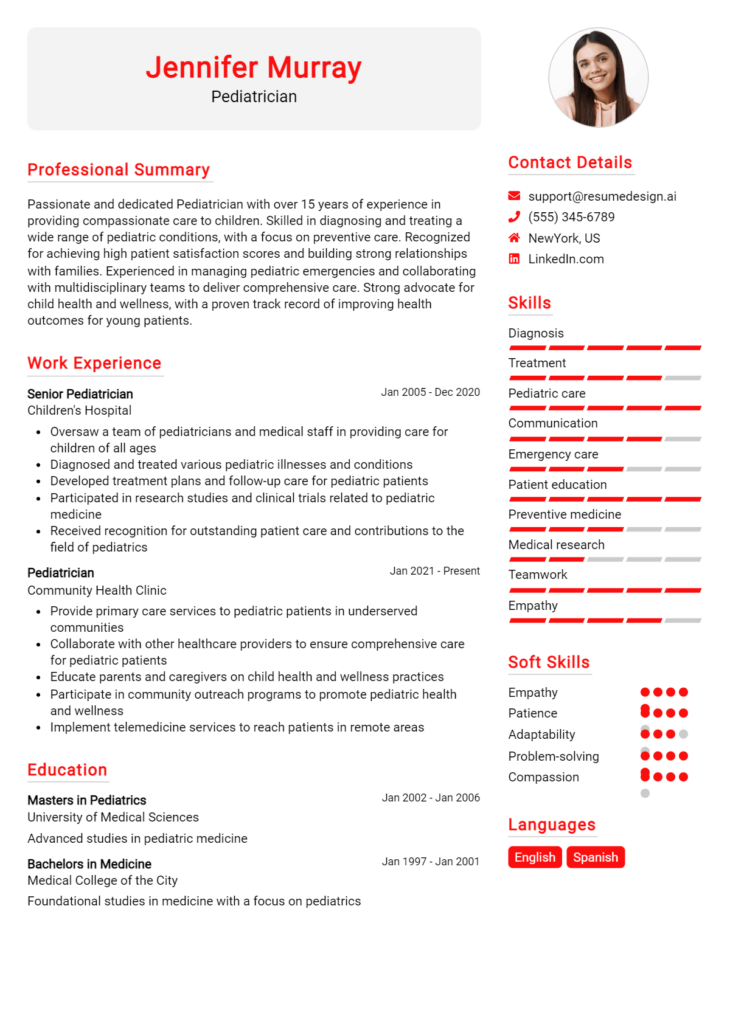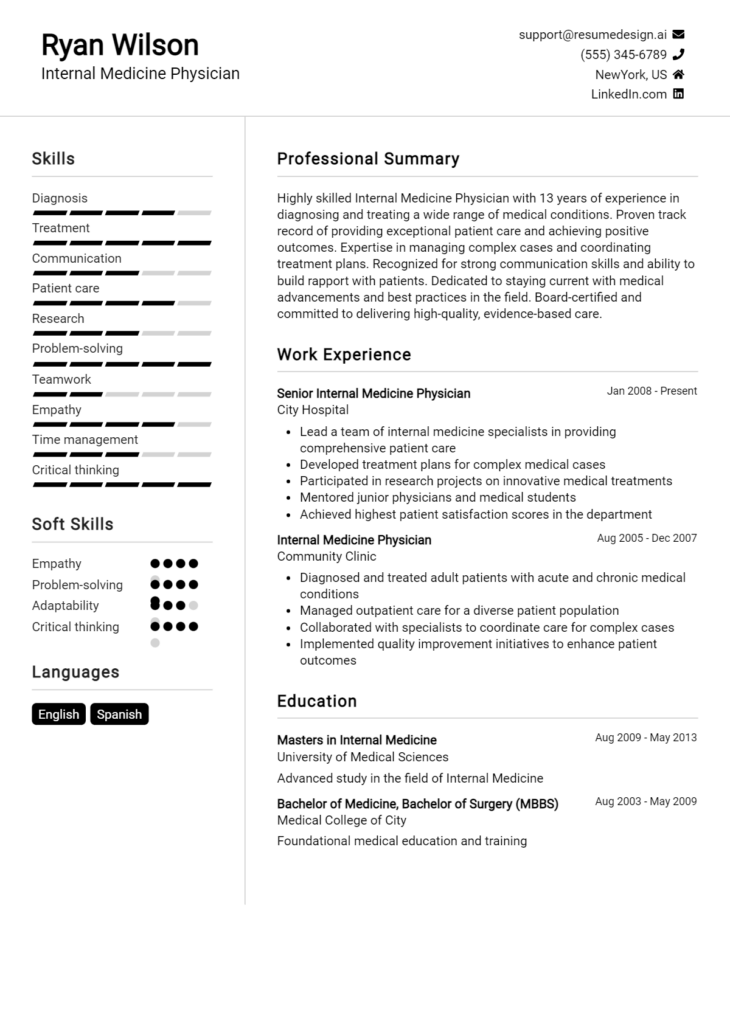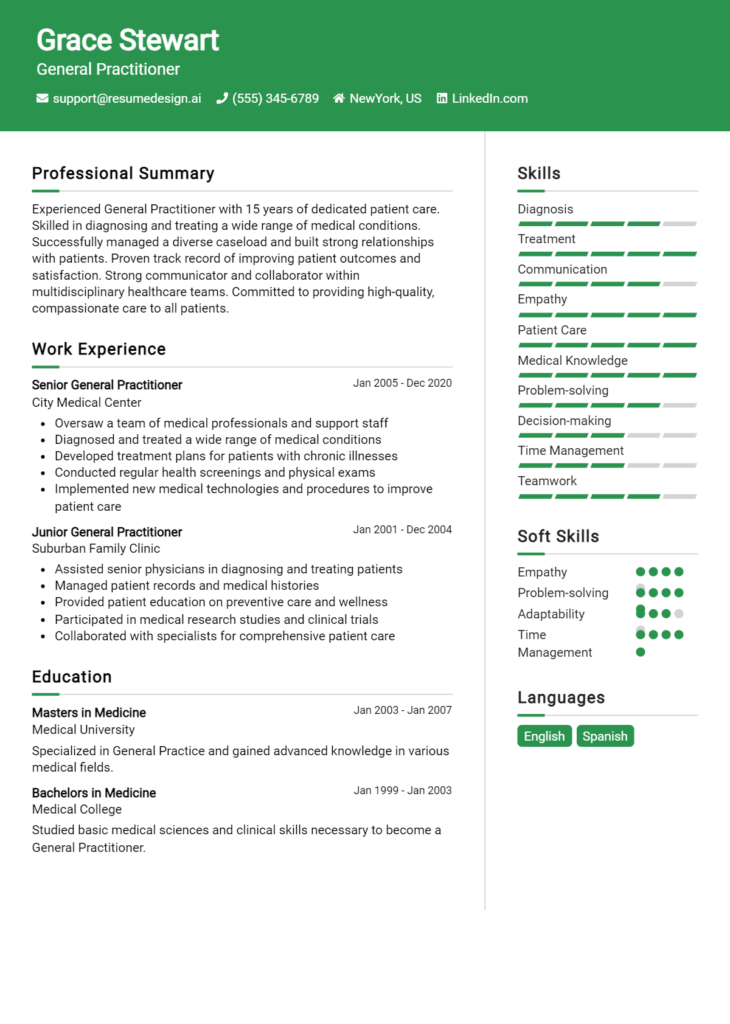Radiologist Core Responsibilities
Radiologists play a vital role in healthcare by interpreting medical images, diagnosing conditions, and collaborating with various departments such as oncology and surgery. Key responsibilities include conducting imaging procedures, ensuring image quality, and providing timely reports. Essential skills encompass technical proficiency with imaging equipment, operational efficiency in workflow management, and strong problem-solving abilities to address complex cases. A well-structured resume highlighting these competencies is crucial for showcasing a radiologist's value in achieving organizational objectives.
Common Responsibilities Listed on Radiologist Resume
- Interpret and analyze X-rays, MRIs, CT scans, and ultrasounds.
- Communicate findings and recommendations to referring physicians.
- Ensure compliance with safety protocols and radiation regulations.
- Conduct interventional procedures as needed.
- Collaborate with multidisciplinary teams for integrated patient care.
- Maintain accurate records and documentation of imaging studies.
- Participate in continuing education and training programs.
- Assist in developing departmental protocols and procedures.
- Mentor junior radiologists and medical students.
- Engage in research to advance imaging techniques and technologies.
High-Level Resume Tips for Radiologist Professionals
In the competitive field of radiology, a well-crafted resume is crucial for making a lasting first impression on potential employers. It serves as a professional introduction that showcases your skills, achievements, and experiences, ultimately setting the stage for your career advancement. A resume tailored specifically for radiologists not only highlights your medical expertise but also demonstrates your understanding of the unique demands of the role. This guide will provide practical and actionable resume tips designed specifically for radiologist professionals, ensuring you stand out in a crowded job market.
Top Resume Tips for Radiologist Professionals
- Tailor your resume to match the specific job description, incorporating relevant keywords and phrases.
- Highlight your medical training and certifications, including board certifications in radiology or subspecialties.
- Showcase your relevant clinical experience, detailing the types of imaging studies you have performed.
- Quantify your achievements, such as the number of procedures completed or improvements in patient outcomes.
- Include any research or publications that demonstrate your expertise and commitment to the field.
- Emphasize your proficiency with radiology software and technology, as well as any additional certifications in advanced imaging techniques.
- Highlight your teamwork and communication skills, particularly your ability to collaborate with other healthcare professionals.
- Utilize a clean, professional format that enhances readability, making it easy for hiring managers to find key information quickly.
- Keep your resume concise, ideally one to two pages, focusing on the most relevant information for the position.
By implementing these tips, you can significantly enhance your resume’s effectiveness, increasing your chances of landing a job in the radiologist field. A focused and well-structured resume not only showcases your qualifications but also demonstrates your professionalism and attention to detail, qualities that are essential in the medical field.
Why Resume Headlines & Titles are Important for Radiologist
In the competitive field of radiology, a well-crafted resume headline or title plays a crucial role in capturing the attention of hiring managers right from the start. A strong headline serves as a succinct summary of a candidate's key qualifications, skills, and experiences, allowing them to stand out in a sea of applicants. By being concise, relevant, and directly related to the specific position being applied for, an impactful headline can pique the interest of recruiters and encourage them to delve deeper into the resume. Ultimately, this element can set the tone for the overall impression a candidate makes, emphasizing their suitability for the role.
Best Practices for Crafting Resume Headlines for Radiologist
- Keep it concise: Aim for a headline that is clear and to the point, ideally under 10 words.
- Make it role-specific: Tailor the headline to reflect the specific position and responsibilities of a radiologist.
- Highlight key qualifications: Focus on the most relevant skills or certifications that align with the job description.
- Use powerful language: Choose strong, action-oriented words to convey confidence and expertise.
- Include years of experience: If applicable, mention your years of practice to establish credibility.
- Avoid jargon: Use clear and simple language that is easily understandable by hiring managers.
- Be unique: Differentiate yourself from other candidates by incorporating personal branding elements.
- Update regularly: Revise your headline to reflect any new skills, experiences, or changes in career focus.
Example Resume Headlines for Radiologist
Strong Resume Headlines
Board-Certified Radiologist with 10+ Years of Experience in Diagnostic Imaging
Expert in MRI and CT Imaging with a Focus on Oncology
Innovative Radiologist Specializing in Interventional Procedures and Patient Care
Dedicated Radiologist with Proven Track Record in Accurate Diagnoses
Weak Resume Headlines
Radiologist Seeking Opportunities
Experienced Medical Professional
Radiology Job Application
The strong resume headlines are effective because they provide specific information that highlights the candidate's expertise and relevance to the position. They utilize powerful language and detail key qualifications, making them memorable for hiring managers. In contrast, the weak headlines fail to impress due to their vagueness and lack of specificity, leaving recruiters uninspired and uncertain about the candidate's capabilities. Effective headlines should always convey a clear message about the candidate's strengths and suitability for the role.
Writing an Exceptional Radiologist Resume Summary
A well-crafted resume summary is a critical component for Radiologists seeking new opportunities. This brief yet powerful section serves as a snapshot of your professional capabilities, allowing hiring managers to quickly gauge your qualifications. A strong summary effectively highlights your key skills, relevant experience, and notable accomplishments, ensuring you stand out in a competitive job market. By being concise and impactful, it sets the tone for the rest of your resume and should be tailored to align with the specific job you are applying for, making it an essential tool in your job search arsenal.
Best Practices for Writing a Radiologist Resume Summary
- Quantify Achievements: Use numbers to illustrate your impact, such as the number of cases reviewed or improvements in patient outcomes.
- Focus on Skills: Highlight specific technical and diagnostic skills relevant to the position, such as proficiency in various imaging techniques.
- Tailor for the Job Description: Customize your summary to reflect the skills and experiences that match the requirements of the job you are applying for.
- Be Concise: Aim for 2-4 sentences that encapsulate your professional identity and key contributions without unnecessary detail.
- Use Action Words: Start sentences with strong action verbs to convey your proactive approach and accomplishments.
- Showcase Certifications: Mention relevant certifications or specializations that enhance your qualifications for the role.
- Include Soft Skills: Highlight important soft skills, such as communication and teamwork, that are essential in a clinical setting.
- Maintain Professional Tone: Use clear and professional language to reflect your expertise and credibility in the field.
Example Radiologist Resume Summaries
Strong Resume Summaries
Detail-oriented Radiologist with over 10 years of experience in interpreting MRI and CT scans, leading to a 20% reduction in diagnostic errors through meticulous case reviews and collaborative patient care.
Board-certified Radiologist specializing in interventional radiology, successfully performing over 200 minimally invasive procedures annually, resulting in a 95% patient satisfaction rate and improved recovery times.
Compassionate Radiologist with a robust background in pediatric imaging, recognized for enhancing departmental efficiency by implementing a streamlined workflow that decreased report turnaround time by 30%.
Weak Resume Summaries
Radiologist with experience in various imaging techniques looking for new opportunities.
Skilled in medical imaging and diagnostics; seeking to contribute to a healthcare team.
The strong resume summaries are effective because they provide concrete data, showcase specific skills, and clearly relate to the Radiologist role, making the candidate's qualifications immediately apparent. In contrast, the weak summaries lack detail and specificity, failing to demonstrate the candidate's unique value or accomplishments, thus making them less memorable to hiring managers.
Work Experience Section for Radiologist Resume
The work experience section of a Radiologist resume is a critical component that allows candidates to effectively demonstrate their technical skills, leadership abilities, and commitment to delivering high-quality imaging services. This section not only highlights the individual's clinical proficiency and familiarity with advanced imaging technologies but also showcases their ability to collaborate with multidisciplinary teams to provide optimal patient care. By quantifying achievements and aligning previous experiences with industry standards, candidates can differentiate themselves in a competitive job market, illustrating their value to potential employers.
Best Practices for Radiologist Work Experience
- Clearly describe technical skills, including proficiency in imaging modalities like MRI, CT, and ultrasound.
- Quantify achievements with specific metrics, such as reduced diagnosis times or improved patient satisfaction rates.
- Highlight leadership roles in managing radiology teams or projects, focusing on outcomes of those initiatives.
- Emphasize collaboration with other healthcare professionals to demonstrate your ability to work in a team-oriented environment.
- Tailor your experience to match the job description, using relevant keywords from the industry.
- Include continuing education or certifications that reinforce your commitment to professional development.
- Use action verbs to convey a sense of proactivity and engagement in your roles.
- Present experiences in reverse chronological order, ensuring the most relevant and recent roles are highlighted first.
Example Work Experiences for Radiologist
Strong Experiences
- Led a team of 10 radiologists to implement a new reporting system, resulting in a 30% decrease in report turnaround time and improved patient satisfaction scores by 15%.
- Conducted over 1,500 diagnostic imaging exams annually, achieving a 98% accuracy rate in identifying critical conditions, thereby enhancing timely interventions.
- Collaborated with oncologists and surgeons to create a multidisciplinary approach to cancer diagnosis, which increased early detection rates by 20% within the first year.
- Developed and delivered training programs for junior radiologists, improving team performance metrics by 25% and fostering a culture of continuous improvement.
Weak Experiences
- Worked in radiology department for several years.
- Performed various imaging studies with no specific outcomes mentioned.
- Assisted in some procedures and helped with patient care.
- Participated in departmental meetings and discussions.
The examples listed as strong experiences are considered effective because they provide specific, quantifiable outcomes that demonstrate the candidate's impact in their roles, showcasing both technical expertise and leadership abilities. In contrast, the weak experiences lack detail and measurable results, making it difficult to assess the candidate's true contributions or skills. This stark difference highlights the importance of articulating achievements and responsibilities clearly and concisely in a resume.
Education and Certifications Section for Radiologist Resume
The education and certifications section of a Radiologist's resume is crucial as it serves to showcase the candidate's academic background, specialized training, and commitment to continuous learning. This section not only emphasizes the essential qualifications that underpin a successful career in radiology but also highlights industry-relevant certifications that validate expertise. By including pertinent coursework, specialized training, and recognized credentials, candidates can significantly enhance their credibility and demonstrate alignment with the specific demands of the job role, thereby increasing their chances of securing an interview.
Best Practices for Radiologist Education and Certifications
- Include only relevant degrees and certifications that directly relate to radiology.
- List certifications from recognized bodies, such as the American Board of Radiology (ABR).
- Detail any specialized training or fellowships that enhance your qualifications.
- Highlight coursework that is directly applicable to the radiology field.
- Use clear formatting that allows for easy reading and quick reference.
- Update the section regularly to include new certifications or training.
- Consider including GPA if it is impressive and relevant for recent graduates.
- Avoid clutter by omitting irrelevant or outdated qualifications.
Example Education and Certifications for Radiologist
Strong Examples
- M.D. in Medicine, Harvard Medical School, 2016
- Radiology Residency, Johns Hopkins Hospital, 2021
- American Board of Radiology Certification, 2022
- Fellowship in Interventional Radiology, Mayo Clinic, 2023
Weak Examples
- Bachelor of Arts in History, University of California, 2010
- Certification in Basic Life Support, expired 2020
- Online course in Digital Photography, Coursera, 2019
- Associate Degree in Radiologic Technology, completed in 2005
The strong examples are considered effective because they directly relate to the candidate's professional training and qualifications in radiology, showcasing a clear path of advancement and specialization in the field. In contrast, the weak examples are lacking relevance to the radiologist role; they include outdated or unrelated qualifications that do not contribute to the candidate's expertise in radiology, potentially undermining their application.
Top Skills & Keywords for Radiologist Resume
As a Radiologist, possessing a diverse set of skills is crucial not only for diagnosing and treating patients but also for crafting an impactful resume. A well-structured resume can significantly influence hiring decisions, emphasizing both technical expertise and interpersonal abilities. Highlighting your skills effectively can demonstrate your capability to handle complex medical imaging technologies, work collaboratively with medical teams, and communicate findings clearly to patients and other healthcare professionals. This balance of hard and soft skills is essential for showcasing your qualifications and making a lasting impression in the competitive field of radiology.
Top Hard & Soft Skills for Radiologist
Soft Skills
- Strong communication skills
- Attention to detail
- Critical thinking
- Empathy and compassion
- Team collaboration
- Time management
- Problem-solving
- Adaptability
- Stress management
- Ethical judgment
Hard Skills
- Proficiency in various imaging techniques (X-ray, MRI, CT scans, ultrasound)
- Knowledge of radiological procedures and protocols
- Familiarity with medical imaging software and technology
- Ability to interpret medical images accurately
- Understanding of anatomy and physiology
- Expertise in patient safety standards
- Competence in using diagnostic equipment
- Familiarity with electronic health records (EHR)
- Ability to conduct interventional radiology procedures
- Knowledge of radiation safety and dosage management
Integrating these skills into your resume, alongside your work experience, can significantly enhance your candidacy for radiology positions.
Stand Out with a Winning Radiologist Cover Letter
As a dedicated and highly skilled radiologist with over [X years] of experience in diagnostic imaging and patient care, I am excited to apply for the position at [Company Name]. My extensive background in interpreting a wide range of imaging modalities, including MRI, CT, and X-rays, has equipped me with the expertise necessary to provide accurate diagnoses and contribute to effective treatment plans. I am particularly drawn to your institution because of its commitment to advanced imaging technology and its focus on patient-centric care, which aligns perfectly with my professional values.
Throughout my career, I have consistently demonstrated a strong ability to collaborate with multidisciplinary teams to enhance patient outcomes. At [Previous Institution], I played a pivotal role in implementing new protocols that improved the efficiency of imaging procedures and reduced patient wait times. My proficiency in utilizing advanced imaging techniques, along with my attention to detail and strong analytical skills, has enabled me to deliver precise diagnostic reports that have significantly impacted patient management. Furthermore, my experience in teaching and mentoring residents and medical students has reinforced my commitment to fostering a culture of learning and excellence within the radiology department.
I am also passionate about staying current with the latest advancements in the field. I regularly attend professional conferences and participate in continuing education opportunities to expand my knowledge and skills. I believe that my proactive approach to professional development, coupled with my dedication to providing high-quality patient care, makes me an ideal fit for the [specific role] at [Company Name]. I am eager to contribute to your team's success and help advance the mission of delivering outstanding healthcare services to the community.
Thank you for considering my application. I look forward to the opportunity to discuss how my experience and vision align with the goals of [Company Name]. I am excited about the possibility of joining your esteemed team and contributing to the exceptional care provided to your patients.
Common Mistakes to Avoid in a Radiologist Resume
In the competitive field of radiology, crafting an effective resume is crucial for standing out to potential employers. A well-structured resume showcases not only your technical skills and experience but also your attention to detail and professionalism. However, many candidates make common mistakes that can undermine their chances of landing an interview. By avoiding these pitfalls, you can present a polished and compelling resume that highlights your qualifications.
Neglecting to Tailor the Resume: Failing to customize your resume for each job application can result in missed opportunities. Employers are looking for candidates who align closely with their specific needs.
Lack of Relevant Keywords: Many employers use applicant tracking systems (ATS) to filter resumes. Not including relevant keywords from the job description can lead to your resume being overlooked.
Overly Technical Language: While it’s important to demonstrate your expertise, using overly technical jargon can alienate readers who may not have a radiology background, such as HR personnel.
Ignoring Non-Clinical Skills: Radiologists need strong communication and teamwork skills. Omitting these non-clinical competencies can give a narrow view of your capabilities.
Inconsistent Formatting: A cluttered or inconsistent format can detract from your professional image. Ensure uniformity in font, spacing, and section headings to enhance readability.
Listing Responsibilities Instead of Achievements: Employers want to see what you accomplished in your previous roles, not just what your duties were. Focus on quantifiable achievements to demonstrate your impact.
Failing to Include Continuing Education: Radiology is a rapidly evolving field. Not highlighting relevant certifications or ongoing education can signal a lack of commitment to professional development.
Omitting Contact Information: This may seem basic, but forgetting to include your updated contact information can prevent potential employers from reaching you for interviews. Make sure it’s easily visible at the top of your resume.
Conclusion
As a Radiologist, your expertise in interpreting medical images is crucial for accurate diagnoses and patient care. In this article, we covered the essential skills and qualifications required for the role, including proficiency in imaging techniques, strong analytical abilities, and effective communication skills with patients and medical teams. Additionally, we highlighted the importance of ongoing education and staying updated with advancements in radiology technology.
To ensure you stand out in a competitive job market, it's vital to have a polished and professional resume that effectively showcases your skills and experience. Therefore, we encourage you to take the time to review and update your Radiologist resume.
Utilize resources available to enhance your resume, such as resume templates, which can provide a solid foundation for your document. You can also explore the resume builder for a user-friendly way to create a professional-looking resume tailored to your unique qualifications. Don't forget to check out resume examples that can inspire you in formatting and content, as well as cover letter templates to complement your application.
Take action today to elevate your career by ensuring your resume reflects your expertise as a Radiologist!

